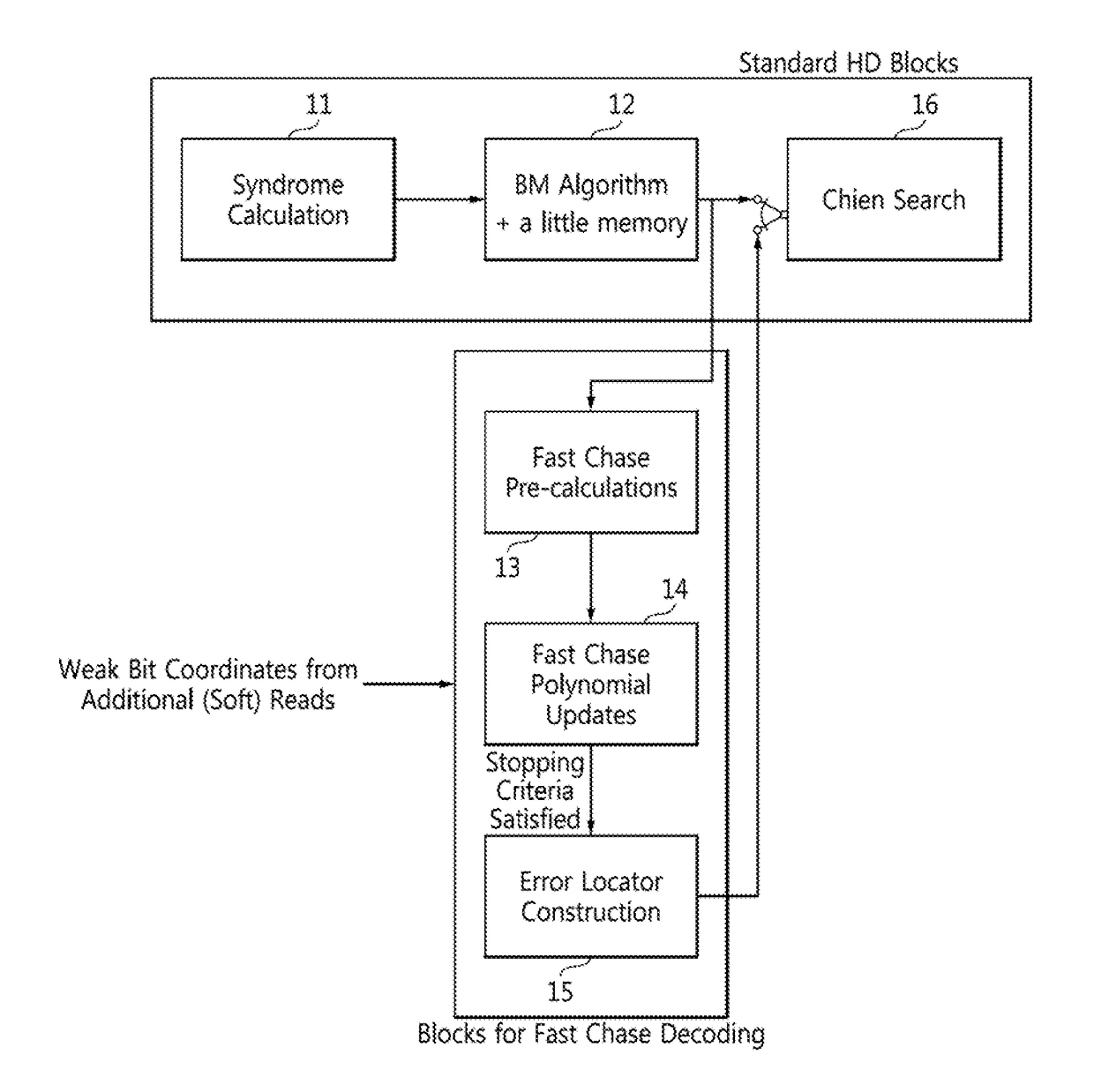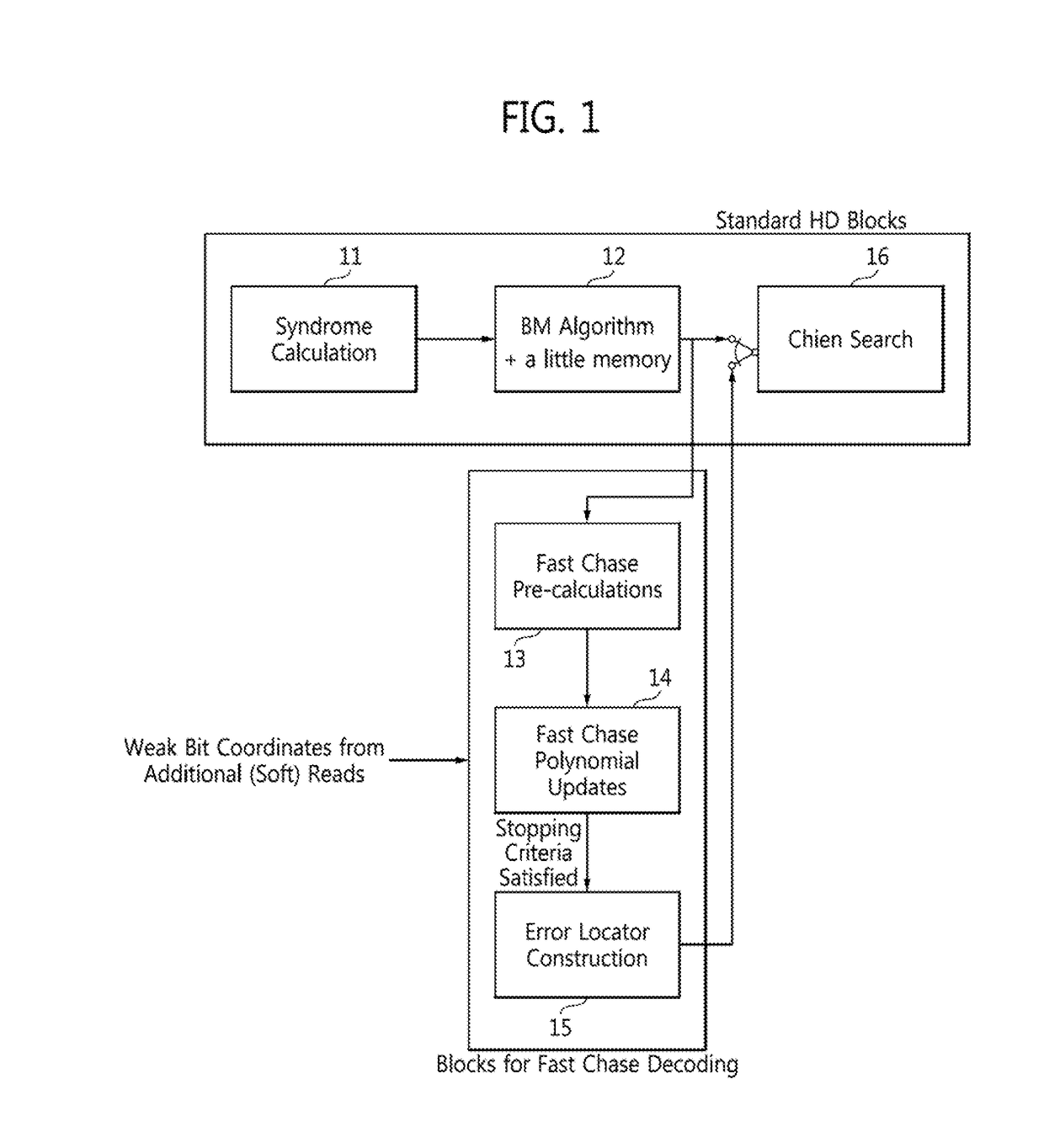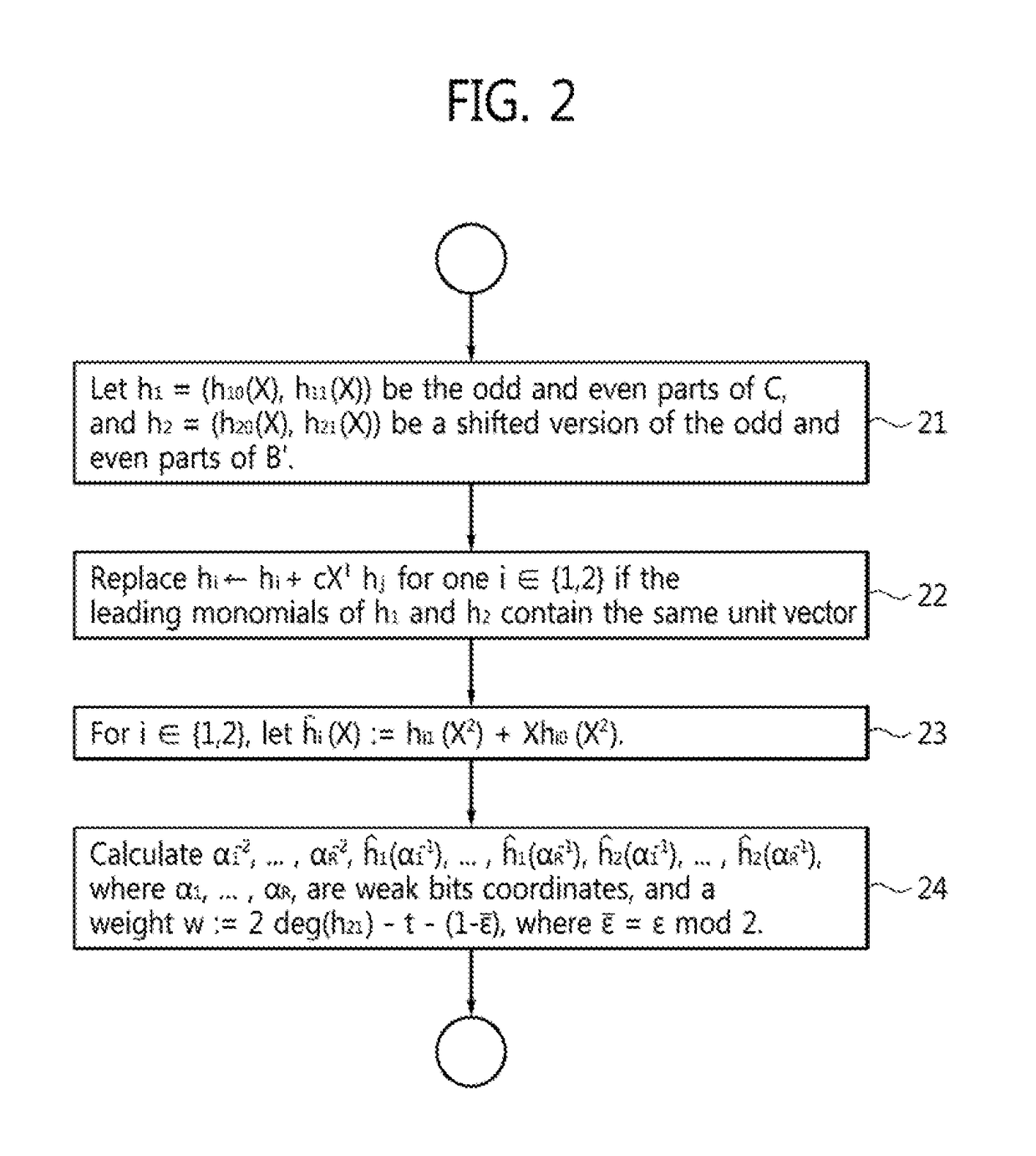Bm-based fast chase decoding of binary bch codes through degenerate list decoding
a binary bch code and degenerate list technology, applied in the field of methods of forming error correcting codes, can solve the problems of small degradation of frame-error rate (fer) and unnecessary computation
- Summary
- Abstract
- Description
- Claims
- Application Information
AI Technical Summary
Benefits of technology
Problems solved by technology
Method used
Image
Examples
Embodiment Construction
[0026]Exemplary embodiments of the invention as described herein generally provide systems and methods for performing BM-based fast chase decoding of binary BCH codes. While embodiments are susceptible to various modifications and alternative forms, specific embodiments thereof are shown by way of example in the drawings and will herein be described in detail. It should be understood, however, that there is no intent to limit the invention to the particular forms disclosed, but on the contrary, the invention is to cover all modifications, equivalents, and alternatives falling within the spirit and scope of the invention.
[0027]Exemplary embodiments of the disclosure as described herein generally include systems and methods for a new polynomial-update algorithm that manipulates polynomials of degrees that typically grow from 0 to only 2r−1, and has a new stopping criterion that differs from Wu's criterion and that avoids unnecessary Chien searches. For example, if t=10 and r=3, Wu's p...
PUM
 Login to View More
Login to View More Abstract
Description
Claims
Application Information
 Login to View More
Login to View More - R&D
- Intellectual Property
- Life Sciences
- Materials
- Tech Scout
- Unparalleled Data Quality
- Higher Quality Content
- 60% Fewer Hallucinations
Browse by: Latest US Patents, China's latest patents, Technical Efficacy Thesaurus, Application Domain, Technology Topic, Popular Technical Reports.
© 2025 PatSnap. All rights reserved.Legal|Privacy policy|Modern Slavery Act Transparency Statement|Sitemap|About US| Contact US: help@patsnap.com



